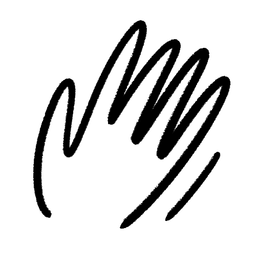Using Notion at Gitcoin
- If you are new to Notion, read this post with the best beginner tips & tricks. The NOTION is publicly viewable. (Not contributor info) Private comms should be linked on the proper stream page with access control handled separately.
Access Control
Contact: or for help
Workstream Leads and Coordinators
Receive Full Access GitcoinDAO's main page
- access to all the internal Databases
- able to grant access
⛔️ Do not give Full Access at all including views and comments⛔️
Any access should be granted through the Access Control channel at Discord, any GitcoinDAO core contributor have access to that channel and can request the access.
📄 Limited Edit Access📄 (not full access)
For contributors that help to scribe your meeting minutes
- Meetings + Minutes DB
When Onboarding Contributors to GitcoinDAO
- Contributors DB - but only for their own row so that they can fill their information. This is because our contributor list is important to keep personal yet protected.
👁 View Access👁
- Informational Databases (Workstreams, Roles, Contributors, Open Positions) as these are crucial for people to start participating in GitcoinDAO
- GitcoinDAO's main page
How to navigate through notion as efficient as possible.
- Personal page (link to an explanation video)- Everything where you are involved and tagged is on your personal profile.
- Favorite - all pages that you are using often, you can click on the start button at the top-right of the page and save it as favorite. That will display the page on the left-side banner.
- Quick find (link to more guidance) - you can use the “quick find” feature to find anything by its name within the Notionc
The Notion Database structure
Gitcoin notion is created as a set of Databases, that are interconnected.
The logic is that those databases consist of the same type of information across the DAO, its important that workstreams use those databases for storing the information to ensure easy flow of information.
Here is a list of Databases:
- Initiatives DB
- Contributors DB
- Action Items DB
- Open Positions DB
- Meeting Minutes DB
- Working Documents DB
- Workstreams DB
As you can see the Databases contains similar information across various parties. This means that if you are creating a Meeting Minutes on FDD meeting it will be in the same storage/database as Meeting Minutes from DAO Ops call. This structure enables cross-workstream collaboration and as an individual having a good view of all stuff you are involved in. That's why it’s important to have a personal profile in the contributor database to see all the active tasks and documents relevant to you. See screenshot bellow:


Because all databases are connected any changes to them will be reflected on all pages, therefore don't delete anything that is not yours use filters to show only what you want to see
A few tips for Notion users:
- Do not create your own database unless completely necessary (New databases are not connected to peoples profiles, therefore can cause friction)
- Tag people using relation to contributor database, therefore the task can be shown on their personal page
Notion Filters
Official guidance here:
Regarding Gitcoin Notion, there are usually some filters predefined, for example when you are creating your personal page, the default filter is that it will show only content where you are tagged. But as with everything, those filters can get broken or misconfigured. So again if you see too much on your page or any other page, don't delete stuff but setup a filter to see only what you want to see.
Bellow is a test database where you can test filtering. Click on filter in the top-right corner and select advanced filters. Then try to filter:
- All meeting minutes organized by DAO Ops
- Remove filters
- All meetings that are longer than 30 minutes
- Remove filters
Test database
I hope that helps you to test the filter set-up to be more comfortable using this functionality on your own work-stream pages.
Also, be aware that Notion supports filters to be visible only to you or to the whole org. This means if you want to set up your personal view just create a filter and if you want to change it for everyone, click on apply to all.
Gitcoin Notion 101 videos
